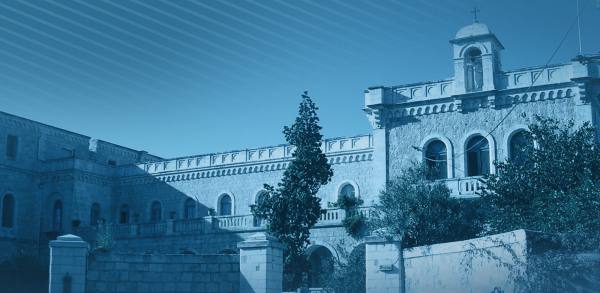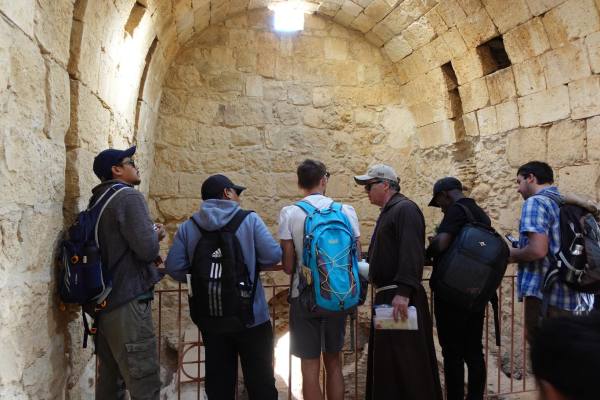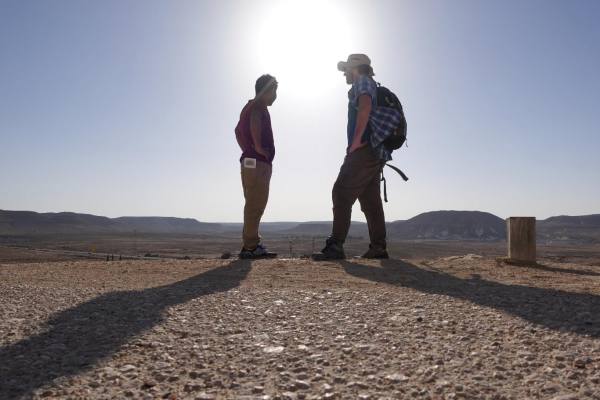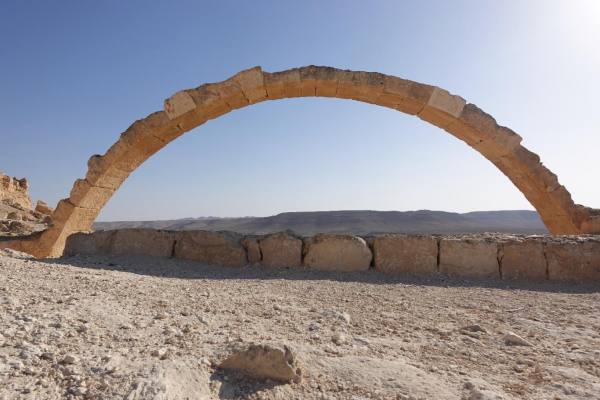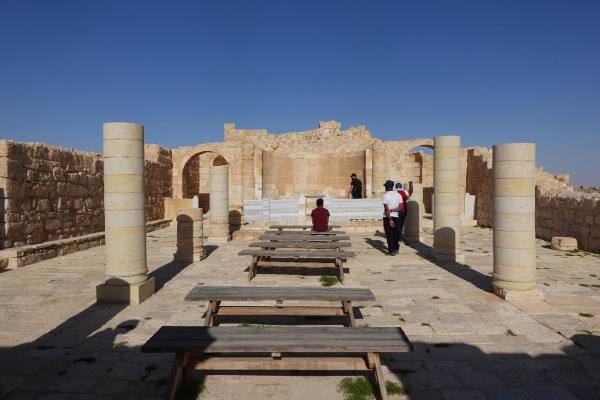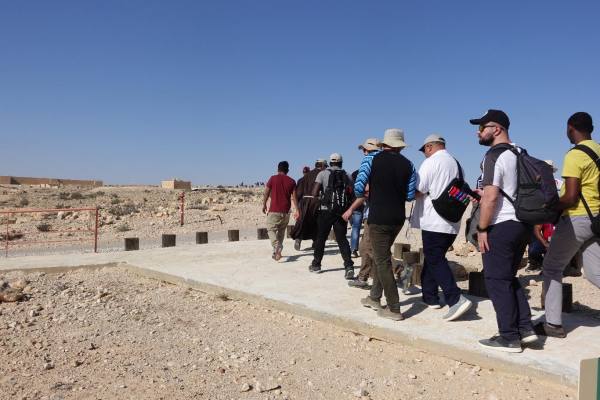
The Negev Valley: Exploring the Ancient Route
On Wednesday, March 28, the entire Ratisbonne Seminary (led by Fr. Junus) travelled two hours, 164 km and 3000 years into history to experience a trade route that united the ancient world. The spice trade was one of the earliest commercial enterprises that traversed races, cultures, empires and continents. Beginning around 1000 BC, spices from the Far East (Indonesia and India) would travel west satiating the needs of the people in Arabia. From the ancient city of Petra, the road would split in two. Some spices continued westward to Egypt while the lion’s share of the product headed north into the Negev Desert and diagonally toward the coast of the eastern Mediterranean Sea- to the port city of Gaza. From there, these highly desired condiments were shipped off to the greater Mediterranean region.
It was there in the Negev desert that we explored. Its plain terrain and abundant water sources made it conducive for ancient travel. One city that developed and catered to those ancient travellers was the city of Tel Beer Sheva. The tell, or archaeological mound, that is located east of the modern city of Beer Sheva, had its most developed period during the end of the 2nd millennium (Iron Age). This period is known by ancient historians as the Israelite period. At the archeological site, there exists the remains of an ancient well where tradition says was used by the patriarchs Abraham, Isaac and Jacob. They were also said to have had interactions with God. The very name Beer Sheva means the Well (Beer) of the Covenant (Sheva). The site of this ancient city revealed an elaborate city, with an administrative city plaza, that a weary traveller would approach when entering the city. It also contains cisterns, storage houses, casemate walls and an elaborate palace. The city thrived for 500 years before finally falling (theoretically) to an earthquake.
The next stop was to the Wadi Zin- a valley ravine that stretches from the central to the northern highlands of the Negev Desert. This Wadi, which is now the Ein Avdat National Park, was an extraordinary site to behold. At this site, Fr. Junus was a man of few words. For the strikingly beautiful landscape spoke volumes. The Ratisbonne explorers took a hike through the canyon- created by the numerous springs at the southern openings of the Wadi. Which emptied into deep pools in a series of waterfalls. These conditions are what made it conducive for ancient travellers to traverse. Following the spice trade route, one can draw a straight line from the ancient city of Petra (in Jordan) to the Gaza port. Arrival at the oasis of Ein Avdat probably marked a joyous occasion for weary sojourners. Not only did it provide water, shade and beautiful scenery, but also indicated the midpoint between Petra and Gaza. The site was settled by Nabatines, an Arab people whose economy depended on the popular and profitable spice trade route. Their occupation in this region probably had a lot to do with their interest in controlling the trade route. Their main city Petra also marked a pivotal location for those coming from the Far East and served as a famous marketplace. These mysterious people had practically a monopoly on the trade route for a few hundred years which probably explains their ultimate downfall. Although they became allies with the Romans upon their conquest. They would ultimately be absorbed into the empire and would lose their distinction as a unique people.
The last stop in this topological visit, to the proper city of Avdat, speaks of this Roman period following Nabatean rule. In Avdat stands the remains of an ancient Roman villa which served as a lookout spot over the trade route. This villa tower emphasizes the importance of the trade route for the Romans, who were famous for maintaining all the revenue streams that previous people cultivated. The name of the city (Avdat) came from the name of the Nabatean king Obada II. There is even an inscription which asks Zeus Oboda to bless the builder of the tower and its inhabitants. Even today, one can see the elaborate construction that was done by the Romans. The Villa, which served as an army camp for the Roman X Legion, contained vaulted rooms, walkways, Roman arches, cisterns, and a tower. It even contained a wine press. This was also probably not only for domestic use but probably catered to travellers of the spice trade. The temple within the villa marks the various people who inhabited the area. An old Greek inscription notes their god Zeus and the Nabatine king Obada. From the Roman temple, one can see the remnants of Christianity’s conquest. The Byzantines controlled and renovated the villa for a few hundred years before an earthquake brought it down.
The most remarkable moment for me occurred here at the villa at Avdat. Looking out from where the tower stood, I could see the ancient trade route through the Negev Desert. Looking left I can imagine those coming from Petra. Turning to the right, I pictured the route towards the Gaza Port. One thought grabbed my attention and sparked my imagination. I was overwhelmed by a vision of a caravan of traders passing by on camels and carrying all the goods they wished to barter. One of those spices that they were carrying- around the turn of the first century was the very frankincense that was used to adore my saviour at the time of his birth. It was a moment that brought me great joy and immeasurable gratitude for my God.
By Br. Leo Adrian Imbert, SDB.
